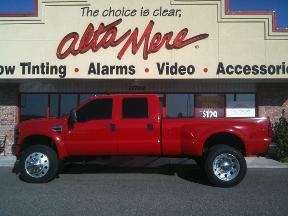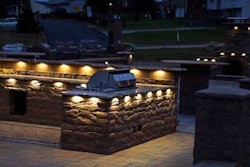 The Moran Family of Brands, which includes Alta Mere stores, recommends keeping a winter weather kit in your vehicle throughout the season.
The Moran Family of Brands, which includes Alta Mere stores, recommends keeping a winter weather kit in your vehicle throughout the season.Photo: Alta Mere
Cold temperatures, snow and ice wreak havoc on roads and vehicles. Yet, according to the Car Care Council, most of your fellow drivers admit they don’t prepare their cars for winter weather.
Car care experts at Moran Family of Brands – franchisor of Mr. Transmission and Alta Mere stores, among other automotive companies – urges motorists to shape up their cars for winter by following these tips:
Take care of the battery
Winter temperatures cause a car’s electrical system to work harder, particularly with the increased power demands of heating systems, defrosters and windshield wipers. Plus, the cold temperatures reduce a vehicle’s battery power by up to 50 percent. A car battery typically lasts 3-5 years, so keep track of the battery’s age.
Battery cables and clamps should also be checked regularly for fraying or corrosion. Battery acid corrosion appears as a white, powdery substance. Clean the terminals with baking soda, water and a toothbrush.
Monitor your fluids
Drivers will want to keep their antifreeze/coolant mix at the appropriate levels to prevent the engine from freezing and reduce corrosion. A 50/50 mix will keep fluids from freezing at temperatures as low as minus 34 degrees.
As for motor oil, cold temperatures make oil thicker and create unwanted friction in the engine. Consider using a lighter grade of oil in the winter months if you live in a cold climate. It’s best to check the fuel, air and transmission filters at the same time.
Keep your gasoline tanks at least half full during the winter months. This will decrease the chances of moisture from condensation freezing and blocking the flow of gas in the fuel lines.
Check your tires
Winter temperatures cause the air in cold tires to contract and drop in pressure. Deflated tires will reduce the tread and the traction of the car, which can significantly increase the chances of sliding on icy patches.
Read your owner’s manual for suggested pounds per square inch and put air in at a local gas station to prevent sliding on the ice. Having properly inflated tires will also save on gas mileage by as much as 3 percent.
Clear car of snow, ice
Many people are in such a rush to get to their destination that they do not take the time to clear the outside of their car and windshield.
Make sure wiper blades are in proper working order and free of cracking or deterioration, and also monitor the level of wiper fluid.
Clear all snow and ice from the windshield for proper visibility and from other parts of the car for the safety of other drivers. Test defrosters and allow time for condensation to clear from the entire windshield before heading out on the road.
Create winter weather kit
Every car owner should keep an emergency kit in the vehicle that includes a flashlight, jumper cables, cell phone charger, ice scraper, snow brush, blanket, bottled water and dry food snacks.
Also keep a supply of salt, sand or kitty litter to spread on the ground to gain better traction on icy patches.









